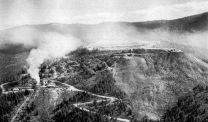EPA Settles Lawsuits, Agrees to Broader Asbestos Risk Evaluations
Legislation & LitigationWritten by Tim Povtak | Edited By Walter Pacheco

Facing legal pressure from health and advocacy organizations, the U.S. Environmental Protection Agency has agreed to broaden its ongoing Risk Evaluation for Asbestos under the Toxic Substances Control Act.
An agreement to settle two lawsuits – both alleging inadequate evaluation of toxic asbestos – was filed Oct. 13 in the U.S. Court of Appeals for the Ninth Circuit in San Francisco.
The Asbestos Disease Awareness Organization was the lead plaintiff in the risk evaluation litigation and was joined by health organizations, scientists and doctors, including acclaimed thoracic surgeon Dr. Raja Flores of Mount Sinai Hospital in New York City.
“We are pleased [with the agreement] because a more robust and comprehensive evaluation will better document the immense harm asbestos continues to cause in the United States,” said Linda Reinstein, president and co-founder of ADAO.
Included in the agreement is a consent decree with a commitment from the EPA to finish Part 2 of its risk evaluation by Dec. 1, 2024, and to provide the court with updates on its progress every 180 days. The next draft scope document will be available for public comment by the end of the year.
“EPA will continue to move forward with actions, including the risk evaluation of asbestos, Part 2 and risk management on asbestos, Part 1, to ensure the public is protected from unreasonable risks in a way that is supported by science and the law,” an EPA spokesperson told The Mesothelioma Center at Asbestos.com.
Legacy Asbestos Hazards Remain
Exposure to asbestos, a naturally occurring mineral once used ubiquitously in manufacturing, can cause serious health issues, including mesothelioma, an aggressive cancer with no definitive cure. The most glaring problem today is legacy asbestos, most of which is found in older, deteriorating construction throughout the country.
The use of asbestos products has declined dramatically in recent decades and is heavily regulated. There is no mining of the product within the U.S. The only raw asbestos being imported today is used by the chloralkali industry to manufacture chlorine.
Part 1 of the EPA’s risk evaluation task was completed in December 2020. It was roundly criticized by health organizations, particularly because it included only chrysotile asbestos, the only form of asbestos to be imported, processed or distributed within the U.S.
Its decision to wait for Part 2 in addressing legacy asbestos also was criticized, along with the absence of a clear scope of what it would include and when it would be finished.
Talc Products To Be Addressed by EPA
As part of the broadened scope of the EPA’s Part 2 risk evaluation, the recent agreement included an evaluation of:
- Talc and talc-containing products potentially contaminated with asbestos fibers and the human health hazards they present
- Health hazards of five more types of asbestos fibers: crocidolite, amosite, tremolite, anthophyllite and actinolite
- Evidence involving noncancer health hazards of asbestos – including asbestosis – in addition to all cancer health hazards
- Risks to human health from all environmental pathways of exposure to asbestos, including ingestion, inhalation and dermal contact
- Health risks of potentially exposed individuals who may be more susceptible to the dangers of asbestos
Also included in the agreement was the EPA’s emphasis on addressing all legacy uses and associated disposal of six fiber types of asbestos.
“After years of delay, we will finally have an enforceable court order that assures that EPA performs its legal duty to determine the risks of legacy asbestos,” said Bob Sussman, ADAO’s attorney. “This is encouraging progress.”
ADAO Continues to Advocate for an Asbestos Ban
The EPA has emphasized that the risk evaluation, which began in 2016, never was intended to address legacy asbestos. It was only added in 2019.
Its Part 1 evaluation found 16 conditions of asbestos use that presented unreasonable risks to human health, either through occupational exposures or consumer uses.
ADAO, the leading nonprofit aimed at eliminating asbestos exposure of all types, has been lobbying Congress for many years to impose a complete ban on asbestos. Several efforts throughout the years have failed.
The closest came a year ago when the Alan Reinstein Ban Asbestos Now Act of 2020 appeared to have broad support but failed to advance through the U.S. House of Representatives. More than 60 countries already have banned asbestos.
Only in recent years has ADAO turned toward legal issues, mostly directed at the EPA. Judge Phyllis J. Hamilton is overseeing the recent ruling.






